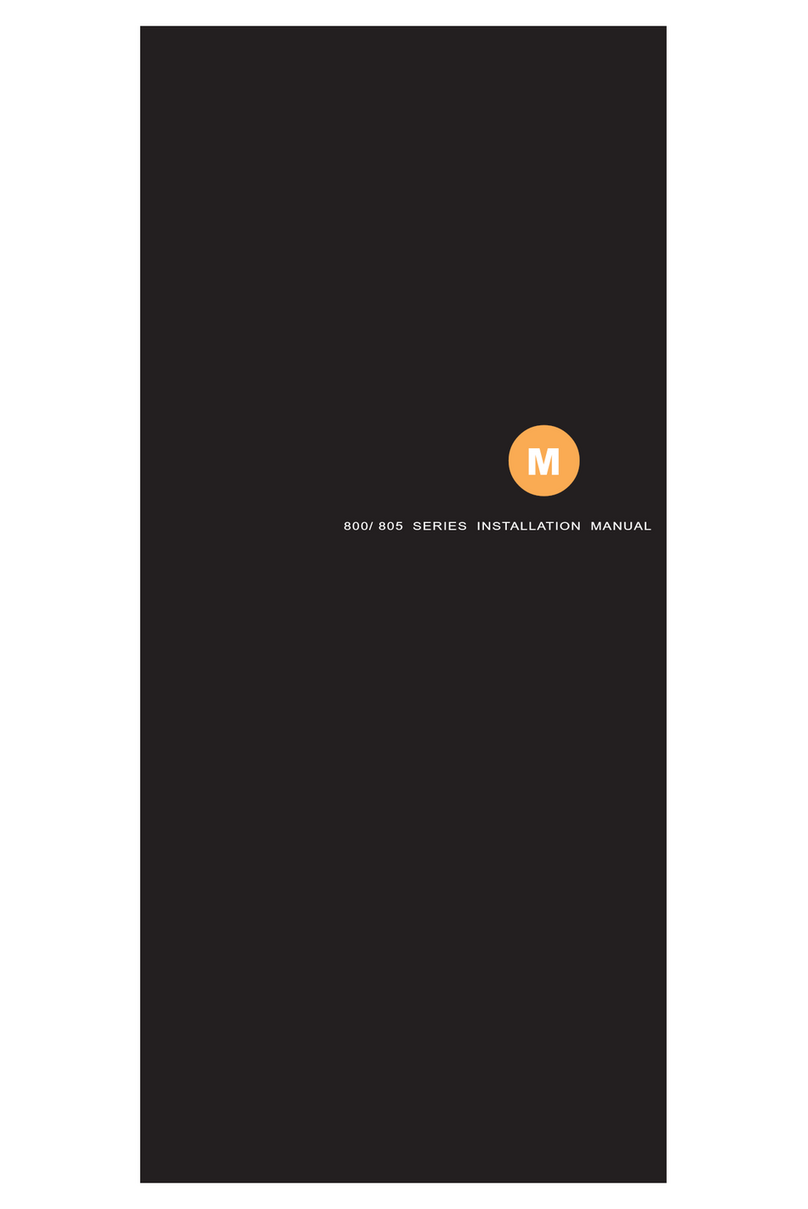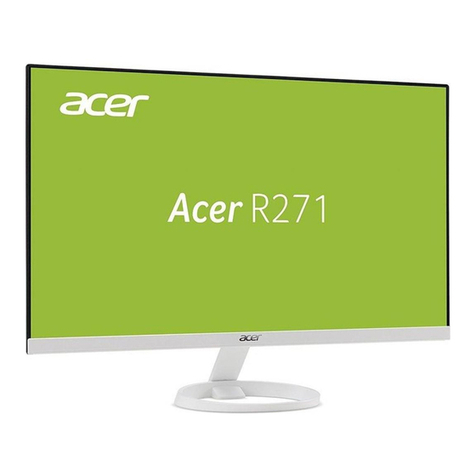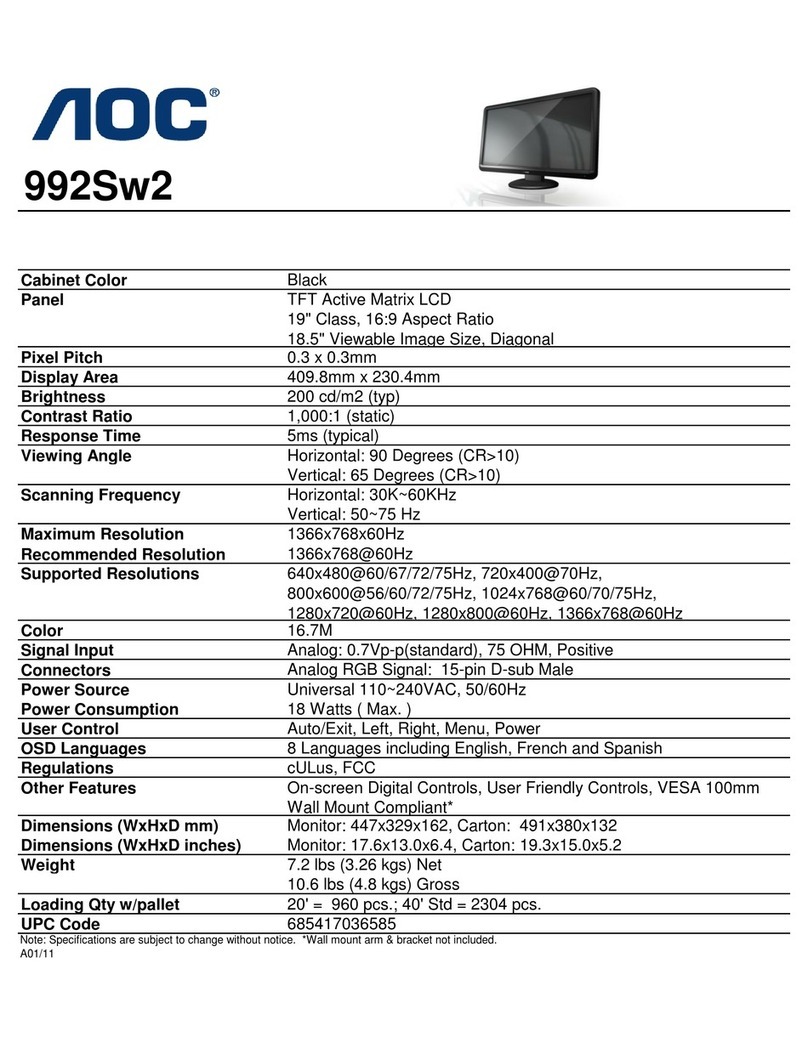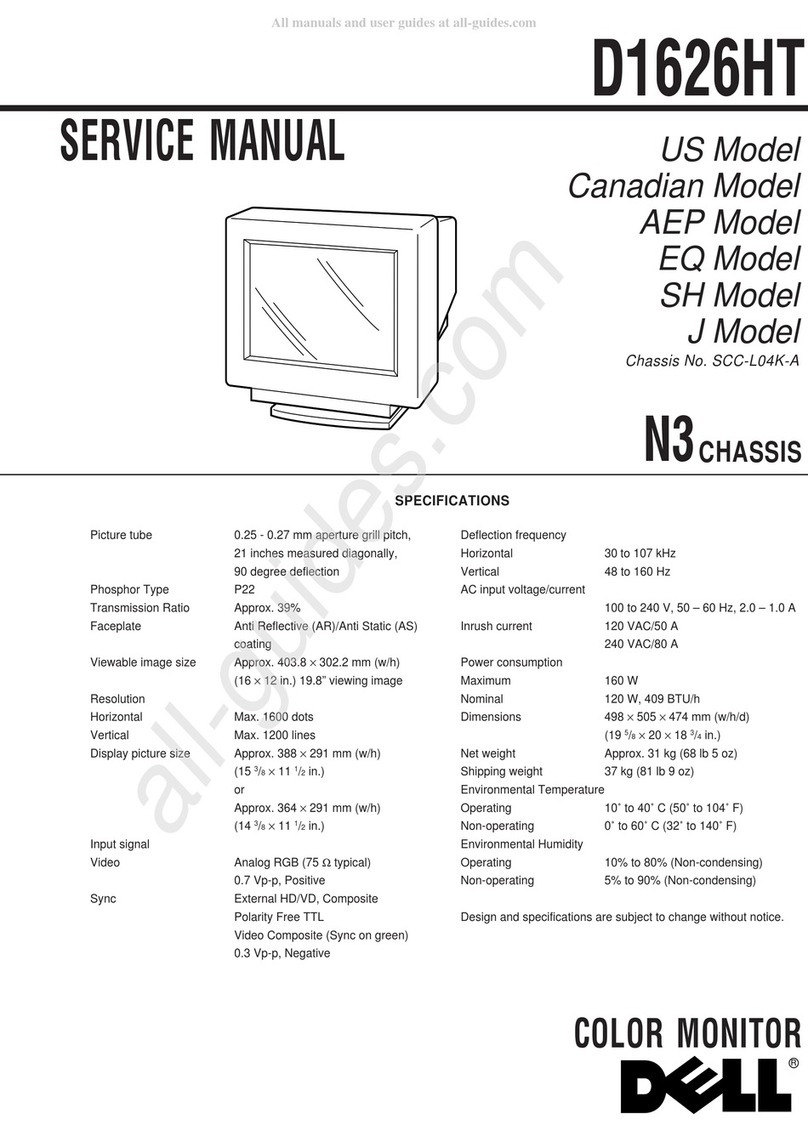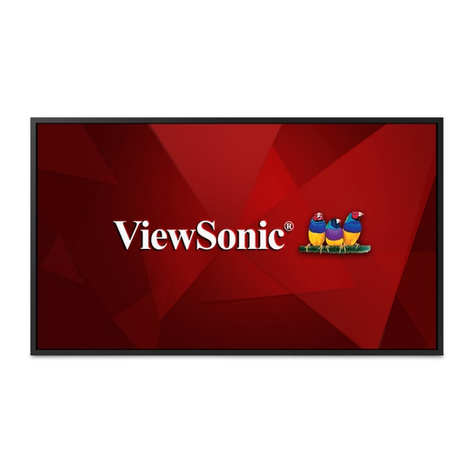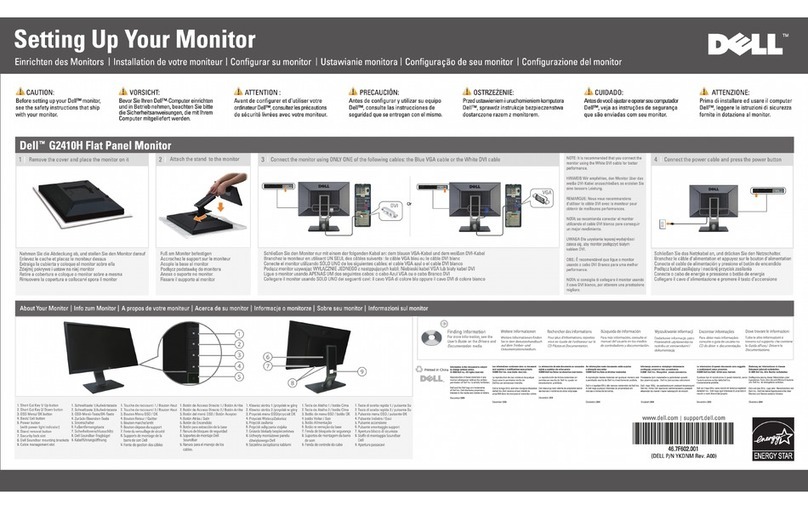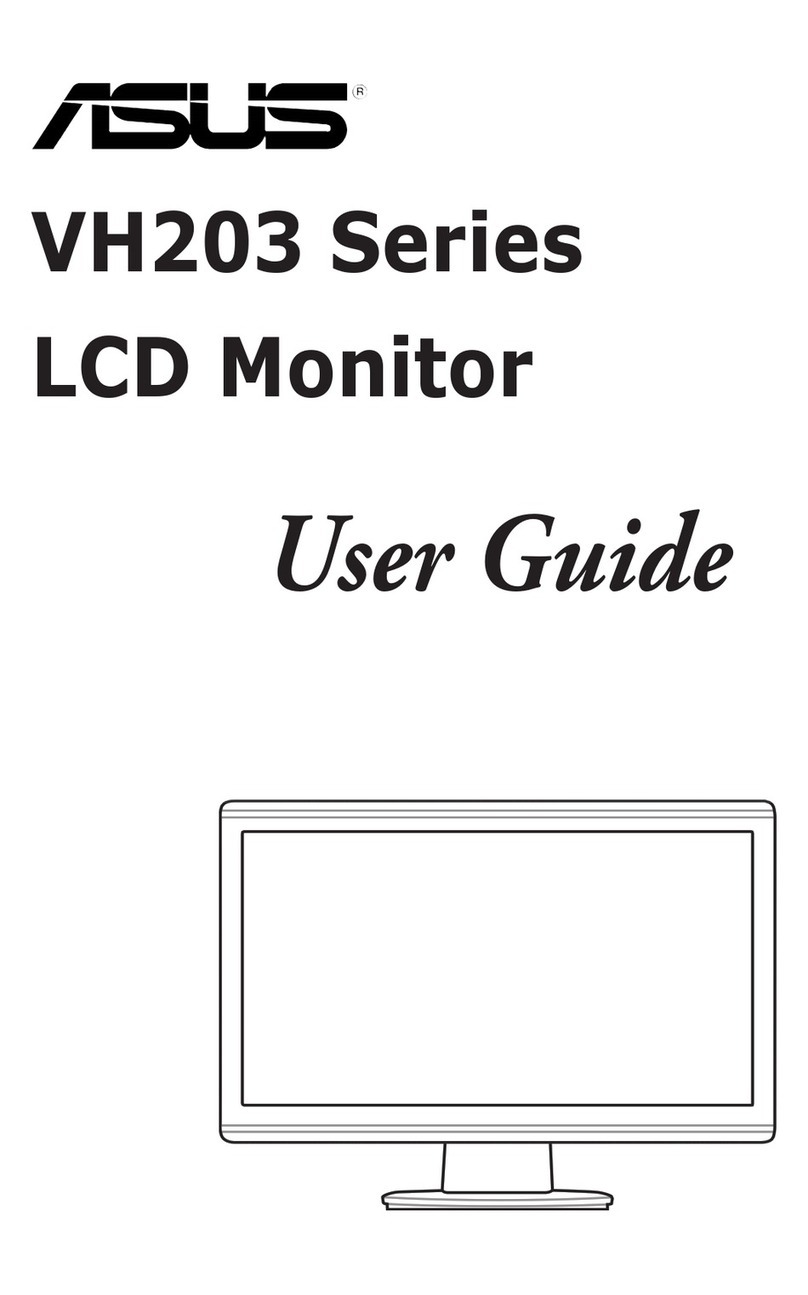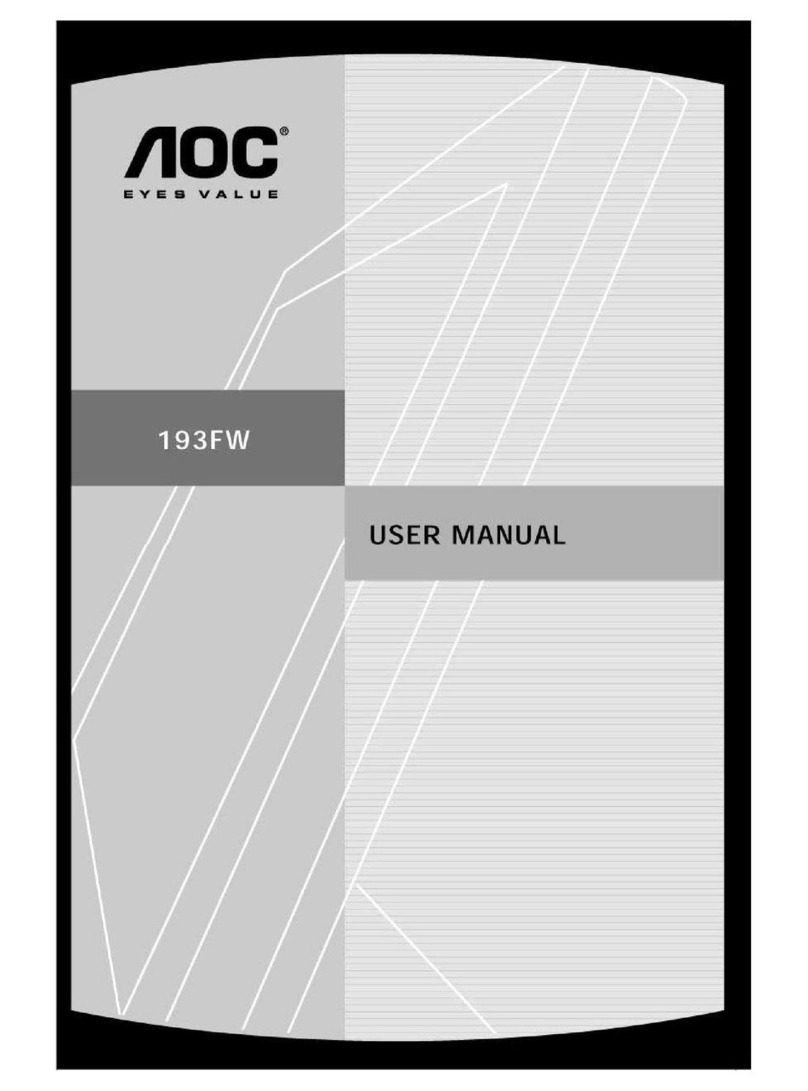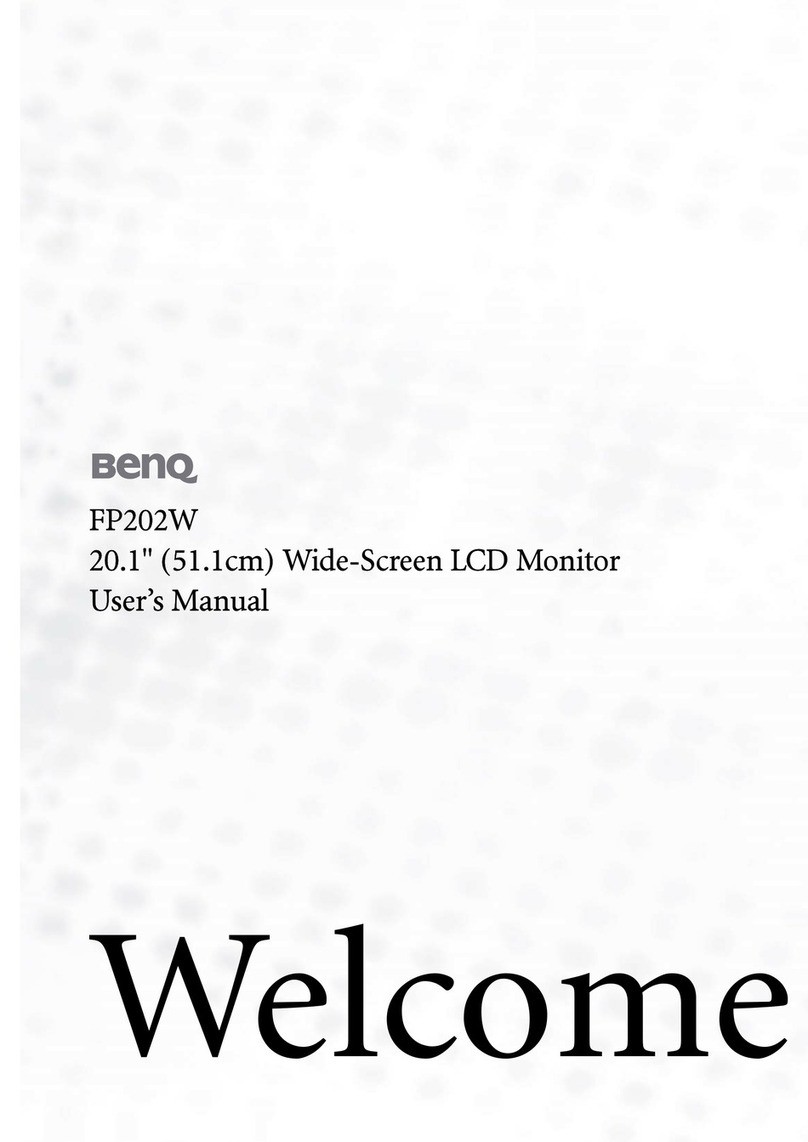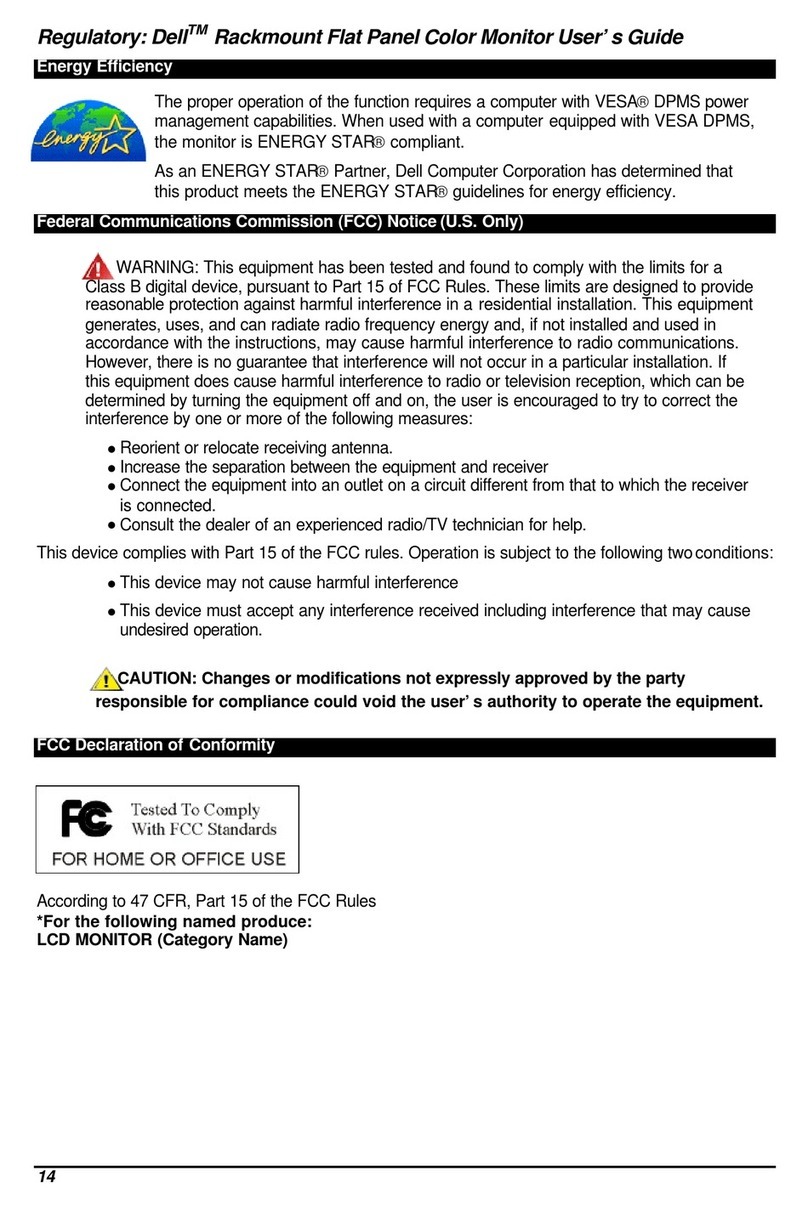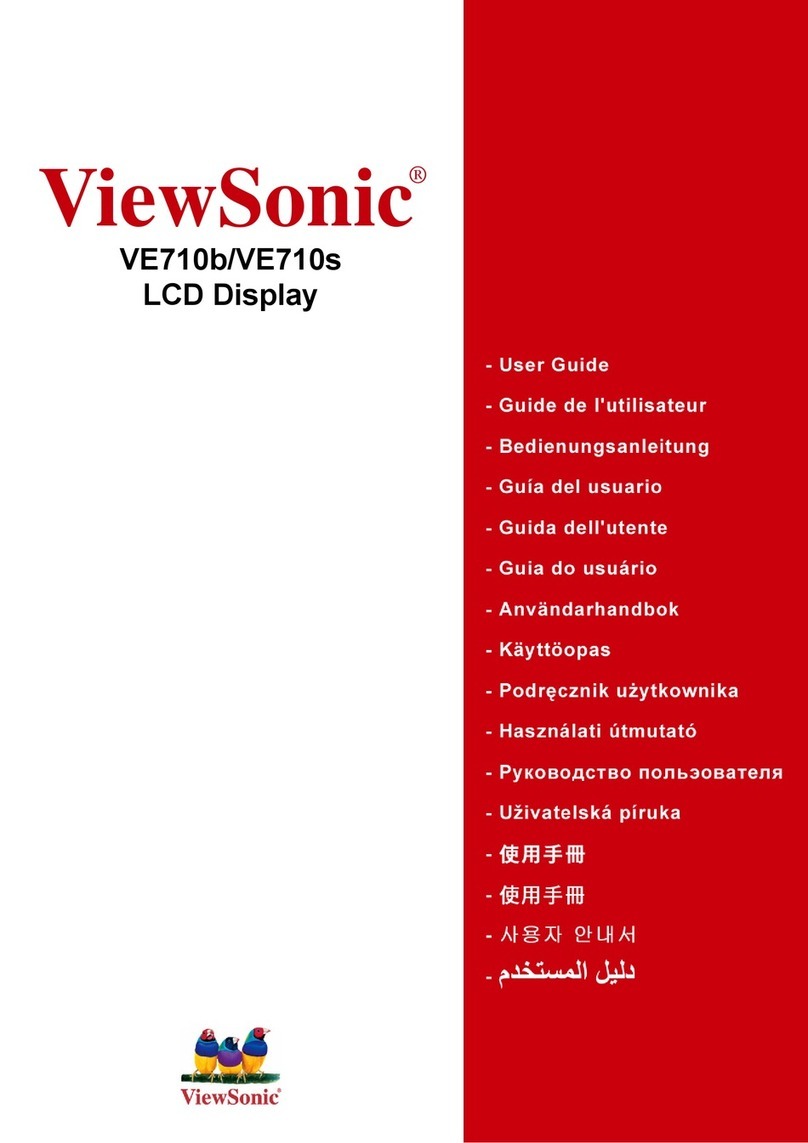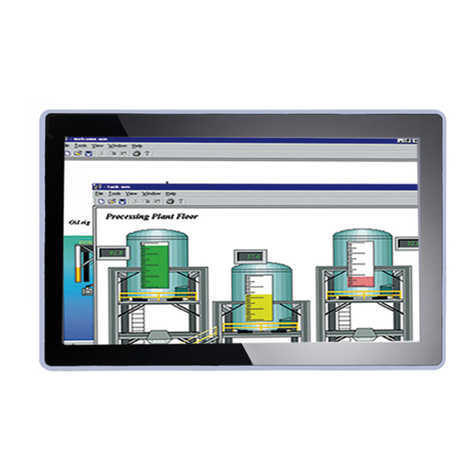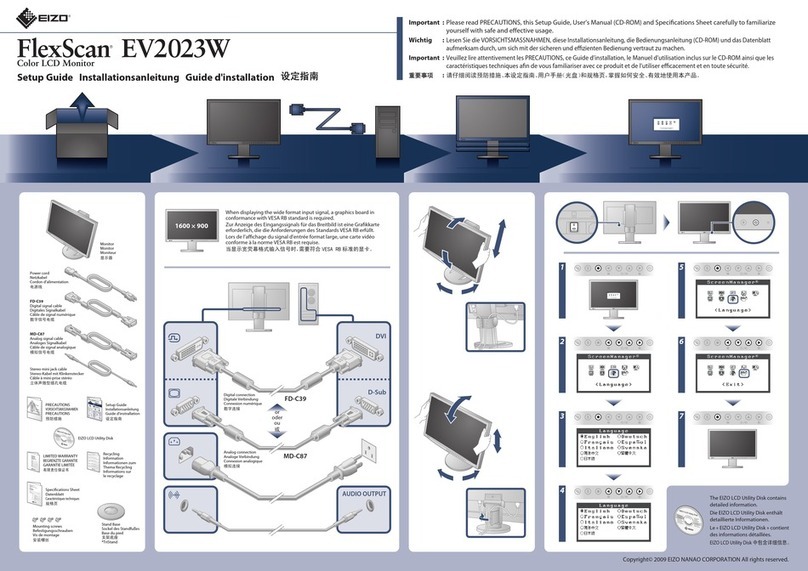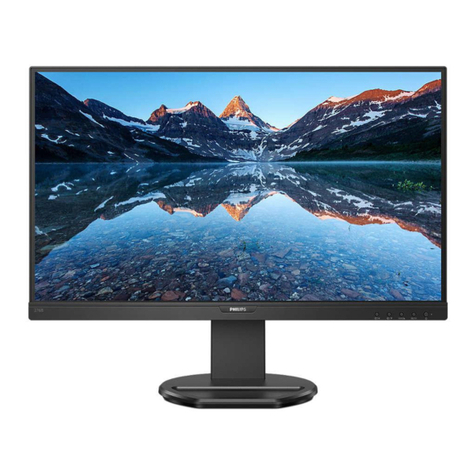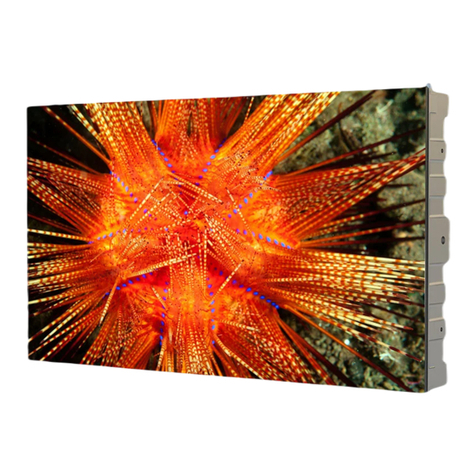PrehKeyTec MCI Touch 15 T User manual

USA
590 Telser Rd Unit B
Lake Zurich IL 60047
Phones: 800 577 7734
847 438 4000
Fax: 847 438 5522
MCI Touch
MCI Touch
User’s Guide
MCI 15 T MCI 15
Germany and other
countries
Preh GmbH
An der Stadthalle
D-97616 Bad Neustadt
a. d Saale
Germany
Phone: +49 (0) 9771 92-0
Fax: +49 (0) 9771 92-300
France
Eragny Parc - Bât. Californie
BP231 Eragny
95615 Cergy-Pontoise
France
Phone.: +33(0) 1 39 09 99 00
Fax: +33(0) 1 39 09 99 09
www.preh-keytec.com

Copyright © 2005, Preh-Keytec, Inc. All Rights Reserved
No part of this document may be reproduced, photocopied, transmitted, translated to another language or
stored on a computer or imaging or information retrieval system in any form, whether electronic, mechanical,
optical or otherwise, without the prior written permission of Preh-Keytec (Preh).
Disclaimer
The information contained in this document is subject to change without notice and should not be construed
as a commitment or obligation by Preh-Keytec. Preh-Keytec assumes no responsibility for any errors that
may appear in this document, and does not make any expressed or implied warranty with regard to this
document, including, but not limited to, any implied warranty of merchantability or tness for a particular
purpose. Preh-Keytec shall not be liable for any incidental or consequential damages arising from or in
connection with the use of this document or the product which it describes, whether or not that use is
consistent with any statement in this document.
Trademarks
Preh, Preh MCI Touch Monitor, MCI 15, MCI 15M, MCI 15MD, MCI 15T,Auto-Sensing BrightnessAdjustment
and the Preh logo are trademarks of Preh-Keytec, Inc. Trademarks of all other products mentioned in this
document are owned by the products’ respective companies.
Contact Information
USA
Germany and Rest of the world
France
Preh-Keytec MCI Touch
Product Manual
Table of Contents
Usage Notice.................................................................. 4
Introduction..................................................................... 4
Connections and Installation........................................... 5
Data Connection
Power, Video and Audio
Mounting
Display Setup and On Screen Display (OSD)................ 6
On Screen Display Controls
Display Setup
Display Resolution
OSD Menu and Functions
Power/OSD Lock/Unlock
Auto-Sensing Brightness Adjustment
Touchscreen and Touchscreen Drivers.......................... 9
Touchscreen Features and Use
Touchscreen and Peripheral Drivers
Driver Installation
Specications.................................................................. 11
Glossary.......................................................................... 15
Warranty.......................................................................... 17

Usage Notice
Warning: To prevent the risk of re or shock, do not expose this product to rain or moisture.
Warning: To avoid electric shock, do not open or disassemble this product. There are no user
serviceable parts in this product. Refer all service questions to Preh or a qualied service
provider.
Introduction
Congratulations on your purchase of a Preh MCI Touch Monitor. This manual covers all models
of the Preh MCI Touch Monitor 15” series of touch monitor products. Preh-Keytec has brought
together a team of experienced developers from the touch industry to create what we believe
to be the nest Touch Monitors available in the industry today.
Your Preh MCI Touch Monitor combines outstanding at panel display design, the most needed
features for typical touch, POS and medical applications, and the best touchscreen components
to deliver a product of superior performance and value. We welcome your comments on our
products and our company. For the latest product information, see our web site at http://www.
Preh-Keytec.com
As you read this manual, you may encounter words or terms associated with display,
touchscreen or touch applications that you are not familiar with. Many of the words unique to
this industry have been italicized on rst use in this manual. Denitions of these words have
been included in the Glossary.
Product features of the Preh MCI Touch Monitor include:
5” AMTFT LCD panel
Auto-Sensing Brightness Adjustment for the best performance in changing light conditions
High resolution resistive touchscreen with Dual Interface Serial and USB connections
o/oo1024 x 768 native resolution
On Screen Display (OSD) for display setup, with vandal-resistant lockable controls
One-click access to Brightness, Audio Mute, and Video Auto-Adjust functions
Universal internal DC power supply allows world-wide operation without user conguration
State-sensing, lockable power switch prevents display from being turned off by vandals,
and restores operation after AC power is interrupted
Power-on indicator built-in to power ON/OFF switch
Variety of VESA-compatible mounting options
Top or bottom access stand lockdown for stable counter top mounting
Kensington® lock connection on touchmonitor chassis for best public access security
Cable management access through display base and bottom
Touchscreen has high performance wedge seal for best contamination rejection in harsh
environments
Two high performance bafed loudspeakers with 1W+1W audio ampliers and electronic
volume controls
Optional MSR and customer display for the ultimate POS package
•
•
•
•
•
•
•
•
•
•
•
•
•
•
•
•
Connections and Installation
Data Connection
Begin your installation by selecting a data connection. For most models, you may use either
a serial or USB data connection. MCI 15M and MCI 15MD models use USB only. Choose the
appropriate data cable from the accessory kit included with your monitor.
Please note that all Preh MCI Touch Monitors that include an MSR or MSR/Customer Display
also have an internal USB hub to interface with the peripheral devices. As a result, the display
will have only one USB cable which supports both touch data and the MSR/Customer Display
data.
Also, two additional User USB ports are available on the display, and these ports may be used
to connect additional USB devices to your system such as a mouse, bar code reader, etc.
Power, Video and Audio
Connect the power, video and (if desired) audio cables to the monitor, using the Quick Set-up
Guide for assistance,
Mounting
You may simply place the monitor upright on the base of the desk stand. However, if you wish
to use your monitor in any other way than resting it on its stand on a at surface, you will need
to either:
Attach the stand to a countertop or wall
Dismount the display chassis from the stand and use the VESA mounting holes on the
chassis to attach the display to an arm or other mount.
Note: Connect the cables to the monitor before attaching the stand to a countertop or a wall if
access to cable connections will be restricted when the stand mounting is complete.
To attach the stand to a countertop or wall (MCI 15):
VESA; The four holes near the middle of the base plate are VESA-compatible with spacing
of 75 mm center to center. Use these holes to bolt the stand from the back side.
Keyhole Slots The three large “keyhole” slots may be used to secure bolts, inserted from the
front side, with nuts, threaded on from the back side of the mounting surface. Insert bolts in
mounting holes, loosely thread nuts on from back side, slip stand keyholes over bolt heads
and position bolt shaft in the narrow portion of keyhole slot. Tighten nuts from back side to
nish the installation.
Top-down Anchors; To attach the stand to the mounting surface from the front, use the two
round holes adjacent to the cable access cutout, and the hole in the center of the smaller
keyhole slot near the front of the base plate. The back holes are accessible through the stand
when the rear cover is removed, and the front hole is accessed through the small cover in the
top surface of the plastic base. To remove the cover, rotate it 1/4 turn clockwise by inserting
a at blade screwdriver in the cover slot. To attach the display to an arm or other mount, use
the VESA-compatible holes after dismounting the display mounting chassis from its stand.
The VESA holes are designed to allow for easy attachment of the display to standard swing
arms and mounts.
•
•
•
•
•
5
4

Display Setup and On Screen Display
Connect and secure cables to the display and the computer, except for the USB cable. The AC
cord set provided with your display should be appropriate for your region. If the proper cord set
has not been provided, you may use any cord set with an IEC320 connector at the appliance
end to connect to your touch display.
Notice: Unless your Preh MCI Touch Monitor has a serial data interface, or you are connecting
this MCI Touch Monitor to a computer that already has Preh touchscreen MSR and Customer
Display drivers installed, please leave the USB cable disconnected until the appropriate drivers
for your computer’s operating system have been installed.
On Screen Display Controls
The following table shows the OSD and Power control buttons, located on the right side of the
display, and both the Normal and Direct Access functions of these buttons.
The Direct Access features can be used by pushing the corresponding button without entering
the OSD Menu rst. For example, you may access the Display Brightness feature through
Direct Access by simply pushing the UP button.
Button Symbol Button Name Function/Normal Direct Access
1 Menu Displays/Exits OSD Menu
2 Up Increases selected item value Display brightness
3 Down Decreases selected item value Audio ON/OFF
4 Enter Selects highlighted menu item Video auto adjust
5 Power Turns all display power ON/OFF
Display Setup
Use the OSD buttons to set up the display:
1. Turn on the display with the POWER button.
2. The display will initially be set to properly display the native resolution for the LCD panel,
which is 1024 x 768 pixels. If your computer outputs a video signal at another resolution, further
adjustment than described in this section may be required. Contact Preh Technical Support at
3. Press the ENTER button on the OSD controls. A pop-up window on the display should
appear with the message “Auto Adjusting Please Wait.”
4. Inspect the top, bottom, left and right edges of a typical application to make sure you can
see the entire image on the display without scrolling. If so, you are nished with the basic setup
of the display.
Display Resolution
If your application requires use of the display at another resolution than 1024 x 768, such
as 800 x 600, you may achieve satisfactory operation by using the Auto Adjust procedure
described above, or you may need to use the individual controls in the OSD to properly adjust
the display. Access the OSD main menu and use the Video Adjustment functions (see table on
next page) to resize, move, or adjust the quality of the displayed image.
OSD Menu and Function
The complete OSD Menu is shown in the table below. The Main Menu icon for each menu
group is shaded, and the individual functions within the group follow. To access the OSD Menu,
push the MENU button.
Use the ENTER button to select a highlighted menu, and to move between individual items
within a menu. Use the UP/DOWN buttons to select/deselect an item, or to increase/decrease
the value of an item.
Contrast and Brightness
Contrast Controls the display contrast.
Brightness Controls the display brightness.
Video Adjustment
Auto Adjust Automatically sets display image size, position, and ne adjustment.
Contrast and brightness are not adjusted.
Left/Right Controls horizontal position.
Up/Down Controls vertical position.
Horizontal Size Increases or decreases the horizontal size of the image.
Fine Controls the vertical ne adjustment. May improve picture detail in emulation
modes.
OSD Tool
OSD Left/Right Adjusts the default horizontal position of the OSD on the display.
OSD Up/Down Adjusts the default vertical position of the OSD on the display.
OSD Timeout Determines time (in seconds) that OSD waits before closing automatically
after no action has been performed.
Factory Reset Recalls original factory settings of image parameters.
OSD Language Selects the OSD menu language-English, French, German, Italian, Spanish,
Japanese, Traditional Chinese, or Simplied Chinese.
Color Adjustment Adjusts preset color temperature of the image. Available choices are 9300,
7500, 6500, and 5500° Kelvin (K). A User mode allows custom setup of
each color component of the image-Red, Green and Blue. Default setup for
this parameter is 6500° K. Do not adjust color temperature unless you have
a specic need to do so.
Audio Adjustment
Volume Adjusts the loudspeaker volume.
Mute ON/OFF Mute ON turns off the audio function. Mute OFF restores the audio
function.
Auto DIM
Auto Dim Turns the Auto-Sensing Brightness Adjustment circuit ON or OFF.
Dimming Range Menu shows sensed light level, and brightness setting as a percent age
of full scale (same setting as Brightness in Contrast and Brightness menu
when Auto DIM is OFF). With Auto DIM ON, brightness is now controlled
by the light sensor located at top center of the front bezel. See additional
discussion of the Auto-Sensing Brightness Adjustment. 76

Power/OSD Lock/Unlock Note:
There is no menu graphic for this feature. The Power/OSD lockout menu is separate from the
main OSD.
1. Access this feature by rst pressing the MENU button to access the main OSD.
2. While the main OSD is displayed, press and hold the MENU button. The main OSD will
disappear.
3. While continuing to hold the MENU button down, momentarily press the POWER button.
The POWER/OSD lockout menu will appear.
4. Press the ENTER button to alternately select OSD or POWER, and use the UP and DOWN
buttons to toggle your selection between UNLOCK (the default) and LOCK.
OSD LOCK defeats all normal access to the OSD, including the Direct Access shortcuts to
Brightness, Audio, and Video Auto Adjust. To access the OSD when in OSD LOCK, press and
hold MENU, and while holding MENU down, momentarily press POWER.
POWER LOCK defeats the operation of the POWER button. This feature, in addition to
preventing casual vandalism of the system, allows the MCI Touch Monitor to power up properly
when the system or MCI Touch Monitor is powered from an outlet strip or remote master
switch, or when the monitor is installed in a kiosk or other location where the power button is
inaccessible.
OSD buttons
UP, DOWN and ENTER will scroll through available choices when held down continuously.
The Auto-Sensing Brightness Adjustment feature is intended to be used in situations where
the ambient lighting can change signicantly over time.
The brightness of the image tracks ambient brightness and dims the display as the ambient
light decreases, making the image less obtrusive under reduced lighting conditions where high
image brightness is not necessary for good viewability.
To use Auto-Sensing Brightness Adjustment:
1. Turn AutoDIM OFF with the Auto DIM OSD menu.
2. Set Brightness to desired value in brightest expected ambient light.
3. Turn AutoDIM ON.
4. Set the Dimming Range to desired value. (See discussion below.)
5. Close AutoDIM menu.
If the brightest ambient light is 150 or above as reported by the Auto DIM OSD menu (units
are approximately in Lux, a common measure of illuminance, or lighting of surfaces by light
sources), the brightness will not change when the Auto Dim feature is turned ON.
However, when the ambient lighting is less than 150, the display will immediately dim in
response to the setting of the Auto Dim range and the ambient light:
Dimming Range is a measure of how much the display will dim when ambient light is
reduced.
Dimming only occurs in the ambient light range of 0-150 (Lux) as measured by the automatic
light sensor. If the ambient light is brighter than 150, no dimming will occur until the light level
drops below 150, and then will drop proportionally to the measured light level.
•
•
A Dimming Range setting of 100 means that the image brightness will be reduced to its
minimum in total darkness conditions.
A Dimming Range setting of 0 means that the image brightness will not be reduced at all
under total darkness conditions.
Touchscreen and Touchscreen Drivers
Touchscreen Features and Use
Your Preh MCI Touch series touch display is equipped with a resistive touchscreen. Features
of a resistive touchscreen that are important for your use are:
• Composition: The touchscreen is made of a thin (about 1/8”) sheet of glass overlaid with a
layer of plastic. The resulting composite is placed in front of the LCD panel in your Preh MCI
Touch Monitor.
• Activation: The touchscreen can be activated by anything that applies a force of about 1
ounce over a normal ngertip-sized area. Objects with smaller contact areas such as a credit
card, pen, pencil tip or pencil eraser will activate the touchscreen with even less force. So,
in normal circumstances, a very light touch is all that is required to navigate your application
with the touchscreen.
• Use and Abuse: The touchscreen plastic layer has a hard front surface coating on it, and will
withstand years of use with ngers, ngernails and other relatively large radius styli. However,
hard objects with sharp edges can easily damage the touchscreen. Avoid the use of ball-point
pen barrels with the tip retracted, microball pens, keys, rings, coins and metal tableware.
• Cleaning: The touchscreen may be cleaned with common glass cleaners, but do not use
cleaners with abrasives-Comet, BonAmi, etc. The best procedure for cleaning the screen is to
apply your cleaner to a soft cloth or paper towel, and wipe the touchscreen until contamina-
tion is removed. Applying cleaner to the cloth rather than spraying it directly on the screen will
minimize the amount of overspray that may collect at the bottom of the screen.
• Application Use: One characteristic of the resistive touchscreen technology is that it aver-
ages multiple touches. So, If you touch the screen with two ngers at the same time, on op-
posite sides of the display, the reported location to the application will be in the middle of the
screen! Consider this in navigation of your application.
Touchscreen and Peripheral Drivers
Drivers for different operating systems have been supplied on a CDROM that accompanied
your MCI Touch Monitor. If you cannot nd the disk or need additional copies of the software,
•
•
9
8

Touchscreen and Peripherals Driver Installation
Drivers for all supported operating systems are contained on the Preh Install Disk. To install
drivers, follow the procedures below as appropriate.
Touchscreen support is provided for Windows 98/Me/NT/2000/XP, DOS and Linux (kernels
4.2.18 and above).
The MSR and Customer Display, which are USB devices, are currently supported under
Windows platforms only. Support for Linux will be provided in the future. Contact Preh
TechSupport for further information.
Windows 98/Me/NT/2000/XP Installation:
If you are using a USB data interface, disconnect it from the computer before proceeding.
Connect the touchscreen cable if using a serial interface (MCI 15 only). Insert the disk in
your drive. If AutoRun does not start the installation, double click the “Setup” program in the
CDROM folder.
Follow the instructions pertaining to your particular product conguration, and check the
appropriate boxes in the “Select Features” page to install drivers for the peripherals you
have. The POS demo program may be installed now or at any time in the future.
If the installation program does not restart your computer, shut down, connect the USB
cable, if used, and restart.
After restart, the touchscreen controller and other USB devices, if present (the MSR and
Customer Display), will be found by Windows and the drivers automatically installed for
them.
Find the Preh MCI Touch Monitor Settings icon on the desktop or in Control Panel and use
the features under the appropriate tabs to congure the operation of the touchscreen for your
application, and if necessary, to calibrate the touchscreen to the display image.
The MSR, if present, is congured for keyboard emulation by default. It should work
identically to keyboard wedge readers in all applications. Contact Preh TechSupport
if this format is not suitable for your application.
The Customer Display, while hardware interfaced as a USB device, is equivalent to a
serial display for programming purposes. Contact Preh Technical Support for programming
information on this device.
DOS Installation:
See specic procedures in DOS section of disk.
Linux Installation:
See specic procedures in Linux section of disk.
Kernels 2.4.18 and above (corresponding to RedHat Linux versions 8 and 9) are
supported.
Source code is available on request.
•
•
•
•
•
•
•
•
•
•
•
•
•
•
•
MCI 15 Specications
Monitor Part Numbers MCI 15
MCI 15M
MCI 15MD
Display 15” Color AMTFT LCD
Color Black
Touchscreen Technology 5-wire resistive
Active Screen Dimensions Horizontal
Vertical
11.9” (304 mm)
8.9” (228 mm)
Monitor Dimensions With Stand Height
Width
Depth
13.9” (35.22 cm)
15.5” (39.37 cm)
8.25” (20.95 cm)
Without Stand Height
Width
Depth
12.9” (32.68 cm)
15.5” (39.37 cm)
2.5” (6.36 cm)
Weight MCI 15M Actual
Shipping
15 lb / 6.8 kg
21 lb / 9.5 kg
Brightness LCD 250 nit
With touchscreen 200 nit
Resolution Native 1024 x 768 at 60, 70, or 75 Hz
Supported 800 x 600 at 56, 60,72, and 75 Hz
720 x 400 at 70 Hz; 720 x 350 at 70 Hz
640 x 480 at 60, 72, and 75 Hz
Viewing Angle Horizontal 120° Total (60° left/right)
Vertical 105° Total (60° up/45° down)
Contrast Ratio 400 to 1
Scanning Frequency Horizontal 31.5 - 60 kHz
Vertical 56 - 75 Hz
Video Input Analog RGB (VGA)
Analog RGB with sync on green
Video Bandwidth 80 MHz
Input Video Format VGA/SVGA/XGA analog
Power Supply Voltages Internal DC supply AC input 100-240VAC/50-60 Hz
Power Dissipation 30 W max
Temperature Operating 10°C to 40°C
Storage -30°C to 60°C
Humidity Operating 20% to 80% non-condensing
Storage 5% to 90% non-condensing
11
10

External Connections Power IEC320 Standard AC inlet
Audio Standard 3mm Stereo Jack
Video HD15 (VGA)
Touch Interface Standard USB series “B” receptacle
(detachable USB cable)
Standard DB9 F Serial (MCI 15 only)
(detachable serial cable)
Connectivity Two USB Type “A” input ports (MCI 15M
& MCI 15MD only)
POS Options Magstripe Reader 3 Track Reader with Power and Error
Indicator Light
Customer Display 2 x 20 VFD Display with Dual Axis (tilt &
swivel) Movement
Additional features Power indicator for display, built in to power switch.
Power switch state memory
Digital on-screen display (OSD) Hidden, software lockable
controls
Direct access to brightness, audio mute, and video auto adjust
functions (bypass OSD)
Auto-Sensing Brightness Adjustment
Rubber Wedge Sealed touchscreen
Removable base
Two 75mm VESA mounts (On base and display chassis)
Top or bottom access to countertop mounting holes
Kensington lock connection on chassis
Broad range of vertical tilt (-5º to +90º)
Two built-in 1W bafed speakers
Two Port USB Hub (MCI 15M & MCI 15MD models only)
Product Agency Approvals: UL, cUL, TUV(GS), FCC Class B
Warranty 3 years, 24-hour advance replacement (In the US)
MCI 15T Specications
Monitor Part Numbers MCI 15T C2TR2
MCI 15T C2TR4
MCI 15T C1TR4
Display 15” Color AMTFT LCD
Color MCI 15T C2RT2 Black
MCI 15T C2RT4 Black
MCI 15T C1TR4 Beige
Touchscreen Technology 5-wire resistive
Active Screen Dimensions Horizontal 11.9” (304mm)
Vertical 8.9” (228mm)
Monitor Dimensions With Stand Height 13.89” (35.28 cm)
Width 15.75” (40 cm)
Depth 10.89” (27.66 cm)
Without Stand Height 12.32” (31.30 cm)
Width 15.75” (40 cm)
Depth 2.68” (6.80 cm)
Weight Actual 15 lb/6.8 kg
Shipping 21 lb/9.5 kg
Brightness MCI 15T C2RT2 LCD 250 nit
With Touch 200 nit
MCI 15T C1RT4 &
MCI 15T C2RT4
LCD 400 nit
With Touch 320 nit
Resolution Native 1024 x 768 at 60, 70, or 75 Hz
Supported 800 x 600 at 60,72, and 75 Hz
720 x 400 at 70 Hz
640 x 480 at 60, 72, and 75 Hz
640 x 400 at 70 Hz
Viewing Angle Horizontal 140° Total (70° left/right)
Vertical 125° Total (60° up/65down)
Contrast Ratio 500 to 1
Scanning Frequency Horizontal 31.5 - 60 kHz
Vertical 60 - 75 Hz
Video Input Analog RGB (VGA)
Analog RGB with sync on green
Video Bandwidth 78.75 MHz
Input Video Format VGA/SVGA/XGA analog
Power Supply Voltages DC 12V
Power Dissipation MCI 15T C2RT2 21 W max.
MCI 15T C1RT4 &
MCI 15T C2RT4
40 W max.
13
12

Temperature Operating 10°C to 50°C
Storage -30°C to 60°C
Humidity Operating 20% to 80% non-condensing
Storage 5% to 90% non-condensing
External Connections Power External +12VDC power pack, 5.5mm
miniature jack
Audio Standard 3mm Stereo Jack
Video HD15 (VGA)
Touch Interface Dual Interface USB/Serial Controller;
DB9F 9-pin connector (serial interface);
Standard USB series “B“ receptable (de-
tachable USB cable)
Connectivity MCI 15T C2RT4
MCI 15T C1RT4
2 x Standard USB series “A“ receptacle
(detachable USB cable)
POS Options Magstripe Reader 3 Track Reader with Power and Error
Indicator Light (Only MCI 15T C2RT4
and MCI 15T C1RT4).
Customer Display 2 x 20 VFD Display with Dual Axis (tilt &
swivel) Movement (Only MCI 15T C2RT4
and MCI 15T C1RT4)
Additional features Power switch state memory
Digital on-screen display (OSD)
Rubber Wedge Sealed touchscreen
Hidden, software lockable controls
Direct access to brightness, audio mute, and video auto adjust
functions (bypass OSD)
Auto-Sensing Brightness Adjustment
Removable base
75mm VESA mounts on display chassis
Top or bottom access to countertop mounting holes
Kensington lock connection on chassis
Broad range of vertical tilt (-5º to +90º)
Two built-in 1W bafed speakers
Product Agency Approvals: UL, cUL, TUV(GS), FCC Class B
Warranty 3 Years warranty (In the US)
Glossary
AMTFT-Acronym for Active Matrix Thin Film Transistor. This is the type of liquid crystal display
panel used in essentially all computer at panel displays today.
Calibrate-For touchscreens, “calibrate” is the common term for the process that is really “video
alignment.” A touchscreen and its controller have a coordinate system that are usually not iden-
tical to the coordinate system of the video display of the host computer. By displaying reference
points on the MCI Touch Monitor (through the calibration program) and touching those refer-
ence points, the MCI Touch Monitor coordinate system is scaled to that of the computer.
Color temperature-Color temperature is a simplied way to characterize the spectral proper-
ties of a light source, and is the temperature you would heat a theoretical “black body” source
to radiate light of the same visual color. For example, “low” color temperature, like 3200°K,
implies warmer (more yellow/red) light, while “high” color temperature, like 9300°K, implies
a cooler (more blue) light. Daylight has the 3200°K temperature mentioned near dawn and
evening, and a higher one during the day. The standard unit for color temperature is the Kelvin
(K).
Contrast Ratio-The ratio of the luminance of the display of a full white image to a full black
image. This parameter is useful in determining the relative sharpness of two displays-a higher
contrast ratio usually implies a sharper image, especially when text is displayed.
Controller or Touchscreen controller-The electronics that actually process the touch on the
touchscreen and sends out a digital representation of that touch to the host computer.
Emulation-As used in display technology, emulation mode means an image displayed at a
non-native resolution. For your Preh MCI Touch Monitor and other 15” monitors, the common
emulation modes are 800 x 600 and 640 x 480. In emulation modes, a monitor cannot perfectly
display the image sent from the computer when the monitor pixel to image pixel ratio is not an
integral multiple.
Hub or USB hub-An electronic circuit that combines several USB signals into one.
Illuminance-The measure of how much luminous ux per unit area that impinges on a par-
ticular surface, or how bright a point source of light appears to the eye. It is measured in foot-
candles or in lux.
Kelvin-The scale of temperature measurement that begins at absolute zero. The increment of
temperature that one Kelvin represents is the same as that of the Celsius scale, but the scale
starts at -273.16°C. Thus 293°K is about 20°C or 68°F.
Keyboard emulation-Produces the same output as a keyboard, or a “keyboard wedge” mag-
netic stripe reader.
Keyboard wedge-An MSR unit that connects to a computer keyboard port with a cable that
also connects the standard keyboard, thus a keyboard wedge.
LCD-Acronym for Liquid Crystal Display. The most common technology used in at computer
displays today. “Liquid crystal” molecules (a very complex chemical engineered for this func-
tion) sandwiched between a combination of at glass color lters and polarizers, pass or
15
14

block light in response to electrical signals applied by the display electronics. The result is a
very sharp, bright display that is very thin, and uses little power, compared with a CRT, or tube-
type monitor.
Lux-The standard unit for illuminance is lux (lx) which is lumens per square meter (lm/m2).
1 lux=10.764 footcandle. Common room lighting is 100-1000 lux.
MSR-Acronym for Magnetic Stripe Reader. A device that reads information encoded in the
magnetic stripes on the back of a credit card, etc. The process is essentially identical to the
operation of a cassette tape player.
Native resolution-The resolution of a digital at panel display that actually describes how
many pixels are in each row and column of the display, and which is the resolution that the
display is optimized for. Your 15” Preh MCI Touch Monitor has a native resolution of 1024 x
768, which means that the LCD panel has 1024 pixels on each row, and has 768 rows. Each
element of video information received from the computer/display electronics is assigned to and
displayed by a specic location on the display panel-a pixel. At resolutions other than native
(see emulation) there is not a one-to-one correspondence between the video information
elements and the available pixels on the display. The display electronics must compensate for
this and cannot do a perfect conversion, thus emulation modes never look as good as images
displayed at the native resolution.
Nit-The standard unit of luminance is the candela per square meter (cd/m2), or Nit.
Pixel-Abbreviation for “picture element.” In an electronic display, the smallest complete
element of the picture that contains all possible colors and proper brightness. In your Preh MCI
Touch Monitor, one pixel of the LCD panel is a square “window,” with an area of about 0.3 x
0.3mm, containing three smaller windows that pass red, green or blue light at the appropriate
brightness in response to the video signal from the computer.
Polarizer-A thin glass or plastic sheet that lters out light rays of all but a specic orientation.
Light passing through such a sheet is thus polarized.
POS-Acronym for Point Of Sale.
Serial-A data transmission method where each bit (a “1” or “0”) of data is passed sequentially
(or serially) over a single data path (a wire…). The most common standard for this method
is called RS232. This is a very common method of interfacing peripheral equipment to older
computers. Today this method is increasingly replaced by another method called USB (see
below).
USB-Acronym for Universal Serial Bus. A common method for interfacing peripheral equipment
to computers. It has the advantages over other serial data transmission standards of higher
speeds and the ability to connect many devices to the same port on a computer.
VESA-Acronym for Video Electronics Standards Association. An industry trade group that
promotes interoperability standards within the video and computer industry. The VESAmounting
pattern (75mm) for displays is used by your Preh MCI Touch Monitor on the base and chassis,
allowing the monitor to be quickly attached to standard swing arms and mounting plates.
Preh-Keytec Product Warranty
Preh-Keytec warrants that the Products will conform to the Specications and be free from
defects in material and workmanship for three (3) years from date of shipment. 3 years warranty
applies only for US, customers. For Europe and other countries, please contact marketing@
preh-keytec.de for more information. Customer shall contact Preh-Keytec immediately upon
discovery of any defects within the warranty period. Products must be returned to Preh-Keytec
within thirty (30) days of Preh-Keytec’s receipt of warranty claim notice and only after receiving
Preh-Keytec’s authorization to return products in accordance with Preh-Keytec’s Product
Return Policy. In the case Customer needs fast turnaround for product replacement, Preh-
Keytec will issue advance replacements with 24 hours (US Only) after an Preh-Keytec Return
Material Authorization (RMA) number has been issued for Product to be returned. Warranty
repairs shall be warranted for the remainder of the original warranty period for the Product.
This warranty is void if the Products have been repaired, altered or modied in any manner by
persons other than Preh-Keytec, without Preh-Keytec’s prior written approval. This warranty
excludes prototypes and conditions in Products resulting from normal wear and tear. Defects
caused in whole or in part by failure to properly store, install, operate or maintain Products in
accordance with good industry practices and Preh-Keytec’s recommendations are excluded from
warranty coverage. Damage caused by use of the Product other than that which it is intended
is excluded from warranty coverage. Repair or replacement is Customer’s exclusive remedy
under this warranty, except if such remedy is adjudicated inadequate, Preh-Keytec shall refund
the paid price of the Products. Preh-Keytec will pay to return the Products to Customer. The
turnaround time on repairs will usually be thirty (30) working days or less. Preh-Keytec accepts
no added liability for additional days required for repair. This warranty shall not be enlarged or
modied, and no obligation or liability of Preh-Keytec shall be created, by Preh-Keytec offering
technical advice, assistance, or services relating to the Products. Before returning Products to
Preh-Keytec on warranty claim, Customer shall remove from the Products any hardware, data,
software or programs or keep backups. Preh-Keytec disclaims any liability for loss of such data
in returned Products. PREH-KEYTEC MAKES NO OTHER WARRANTY OF ANY KIND WITH
RESPECT TO THE PRODUCTS, except as specied herein. ALL OTHER WARRANTIES,
EXPRESS OR IMPLIED, INCLUDING BUT NOT LIMITED TO, IMPLIED WARRANTIES OF
17
16
This manual suits for next models
1
Table of contents
